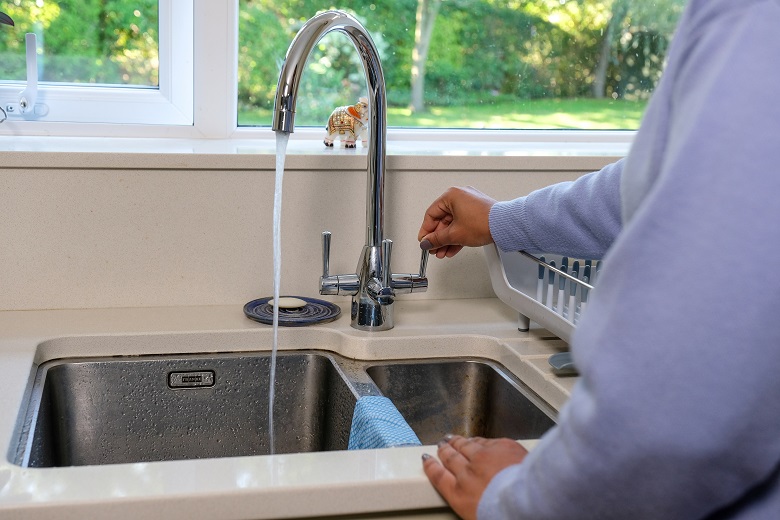Lead
Our water mains aren’t made of lead. The use of lead in water pipes has been banned since the 1970s. There’s virtually no lead in the drinking water leaving our treatment works. You're unlikely to have lead pipes if your house was built after 1970. Also, if you've had all your pipework replaced since 1970.
However, you may have a lead pipe feeding your property or in your internal plumbing. If so, small amounts of lead may dissolve into your water.
Locating your pipes
To find pipes in your property that may be lead, they will either be inside or outside your home.
Inside your home
Locate the pipe leading to the internal stop valve. This can be under the kitchen sink, behind kitchen cupboards, or in the cupboard under the stairs.
Outside your home
Open the flap of your outside stop valve and look for the pipe running towards your property.
How to check for lead pipes
You can check if you have lead pipes by:
Checking the colour
Unpainted lead pipes are a dull grey colour.
Looking at the joints
Lead joints are rounded and swollen where two pipes meet.
Scratching the pipe gently
Scratches on lead pipes will reveal a shiny metal that's silver in colour.
Tapping the pipe with a metal object
Lead makes a dull thud. Copper or iron pipes make a clear ringing noise.
What we're doing to help reduce lead levels
We add a small amount of phosphate to most of our water, which acts like limescale. This reduces lead levels even further. Phosphate at such levels is not harmful and is about 500 times lower than the phosphate levels in milk.
As part of our regulatory requirement we collect samples from each water supply zone. We test for required parameters including lead. If we ever find traces of lead above the standard in your home, we’ll:
- Inform you and notify local authorities environmental health department straight away
- Let you know what we plan to do
- Share advice on how you can reduce lead levels in your water
If you have lead pipes and are in a position to replace it, we offer a lead replacement scheme.

How you can reduce lead levels
There’s virtually no risk to health from the levels of lead allowed in drinking water. The Department of Health recommends you should try to reduce lead levels further. This is particularly important if you’re pregnant or have young children. We’ve put together a short-term measures you can do to help lower lead levels and what to avoid.
Run the cold kitchen tap
Flush the toilet to clear water
By flushing the toilet, it will help to clear any water that has been standing overnight.
Don't disturb lead pipes
By disturbing your lead pipes, this can increase the lead content in your pipes.
Check manufacturer's advice
If using a filter, please refer to the manufacturer's advice on using them.
If you’re worried about lead in your drinking supply, we recommend replacing your pipe with our lead pipe replacement scheme. However, if you’re not in a position to do so, call us on 0800 316 9800 and we’ll collect samples. If the samples show elevated levels of lead, we will only replace our communications pipe.
WhatsApp us
Message us on WhatsApp, so you can get on with your day and respond at your pace. We're available 24/7.
